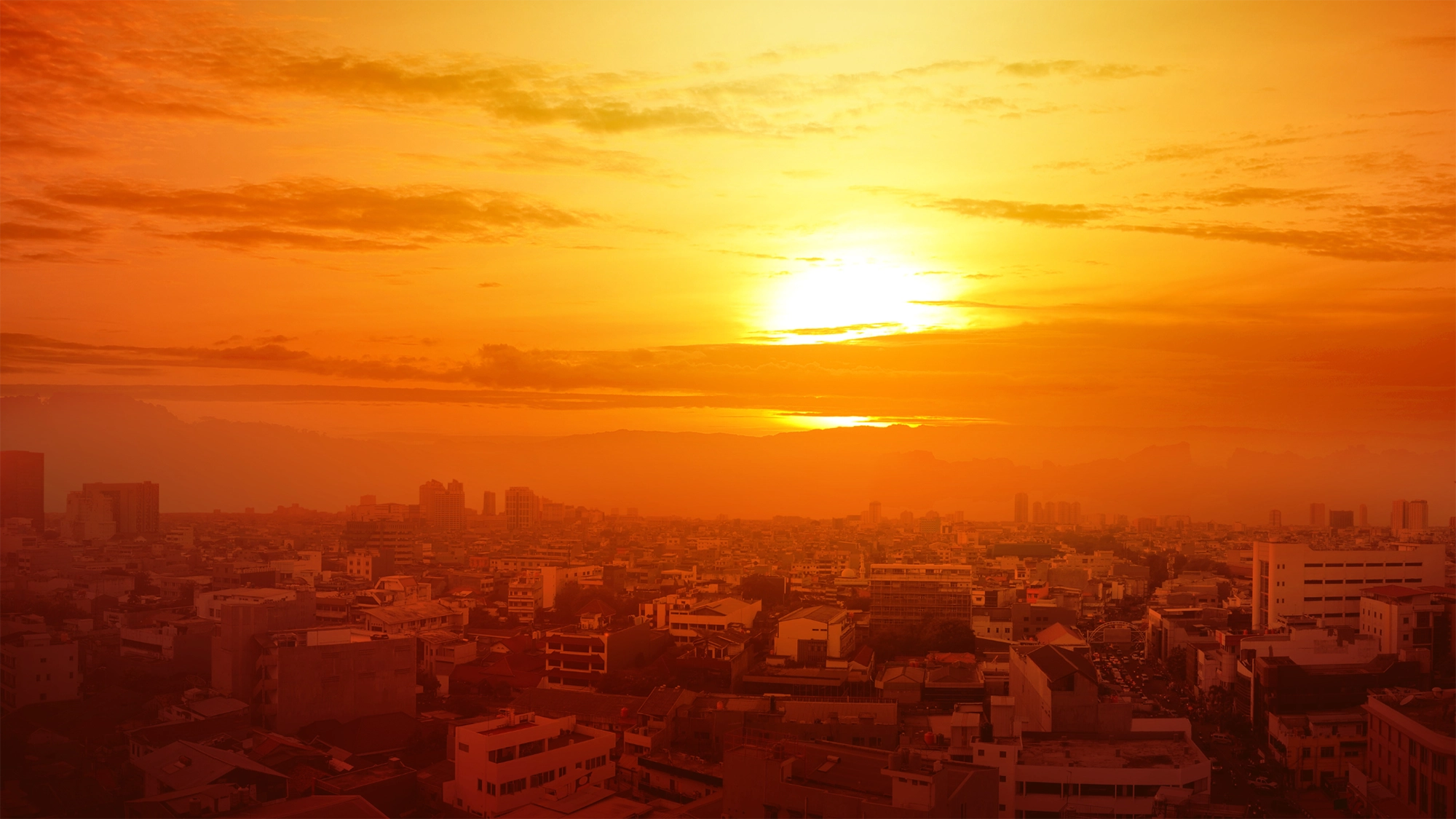What is meant by “urban heat island effect”?
Urban heat island effect (UHI) is a phenomenon that occurs when the temperature of a city is significantly higher than the temperature of surrounding rural areas due to human activity and urbanization. The factors that contribute to generating this effect can be identified in two categories:
-
Morphological factors: shape of the city;
-
Anthropogenic factors: functions and activities performed in the city.
The ways in which this phenomenon manifests itself are as follows:
-
Heat absorption: due to large expanses of concrete, asphalt and buildings, urban areas absorb and store heat from the sun;
-
Reduced green spaces: buildings and infrastructure replace natural vegetation, reducing the number of trees and green spaces that provide shade and cooling;
-
Albedo effect: : Roads and roofs are low in albedo (reflectivity), making them more likely to absorb solar radiation;
-
Waste heat: many urban areas generate waste heat, that is, heat generated by industrial processes, air conditioning systems and transportation. This contributes to higher temperatures in these areas;
-
Reduced ventilation: tall buildings and compact urban structures can impede natural airflow, reducing ventilation and preventing heat dissipation.
The consequences due to the heat island effect are many and affect the quality of ecosystems and the urban environment. In fact, the cape generated by the peak temperature in the city leads to a series of cascading effects: high energy consumption for cooling that causes consequent air pollution, producing psycho-physical malaise and inevitable economic damage. Acting on the individual elements that make up urban areas can improve urban planning and promote sustainable and livable cities for present and future generations.
Sustainability strategies and certifications to mitigate the Urban Heat Island effect.
There are many strategies to mitigate the urban heat island effect, the major ones include:
-
Increased green areas: implementation of parks, urban gardens, green roofs and vertical gardens brings down urban temperatures. Plants provide shade, thus reducing surface temperature, and through evapotranspiration release moisture into the air, contributing to the cooling of the environment;
-
Use of high reflectance materials: the replacement of traditional building floor and roofing materials with high solar reflectance (albedo) materials that reduce heat absorption and thus the temperature of urban surfaces;
-
Passive cooling of buildings: optimal building orientation, use of natural ventilation, and thermal insulation improve the indoor comfort of buildings by reducing dependence on air conditioning systems; this not only lowers indoor temperatures, but also reduces the city’s overall energy load;
-
Blue-green infrastructure: the integration of water-based solutions such as fountains, artificial ponds and green infrastructure creates cool and comfortable microclimates. Water has the ability to cool the environment through evaporation, while green areas improve air quality and reduce the UHI effect.
Sustainability certifications such as LEED (Leadership in Energy and Environmental Design) and BREEAM (Building Research Establishment Environmental Assessment Method) play a key role in promoting these strategies. LEED, for example, provides credits for implementing green roofs, using high reflectance materials, and creating green spaces-these credits incentivize designers and builders to incorporate sustainable measures into their projects. Similarly, BREEAM rewards buildings that take measures to reduce environmental impact, improve biodiversity and use sustainable materials. Both certifications promote the creation of more sustainable and resilient urban environments, reducing the impact of the Urban Heat Island effect. The European taxonomy provides a classification system that identifies sustainable economic activities, representing a key tool for guiding investment toward projects and technologies that contribute to climate change mitigation and adaptation to its consequences, including the UHI effect. The taxonomy incentivizes investment in initiatives that reduce greenhouse gas emissions and improve urban sustainability by facilitating access to subsidized financing for projects that meet stringent environmental criteria. This system aims to direct capital flow to activities that can have a positive impact on the environment by promoting more sustainable construction and urbanization practices.
Toward cooler and more sustainable cities: conclusions on the Urban Heat Island.
The urban heat island effect is a crucial challenge for modern cities as it threatens the environmental well-being and quality of life of residents. The combination of morphological and anthropogenic factors in cities contributes to a significantly warmer urban microclimate than the surrounding rural areas, with negative consequences for the environment and human health; targeted and innovative strategies to reduce urban temperatures are essential to mitigate this phenomenon. Ultimately, addressing the urban heat island effect requires an integrated approach involving urban planning, technological innovation and sustainability policies. Only through a concerted effort can we ensure livable and resilient cities for future generations while contributing to the fight against climate change.










